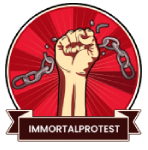What are some common methods used to investigate historical human rights violations?
Investigating historical human rights violations requires a multifaceted approach that often includes various methods to ensure thoroughness and accuracy. Some common methods include:
1. **Document Review**: Analysing official documents, reports from human rights organisations, and archival materials to gather evidence and establish a timeline of events.
2. **Witness Testimonies**: Collecting testimonies from survivors, witnesses, and family members of victims to provide personal accounts and insights into the violations.
3. **Forensic Analysis**: Conducting forensic examinations of mass graves, remains, and physical evidence to establish the facts surrounding deaths and disappearances.
4. **Interviews and Surveys**: Engaging with affected communities through structured interviews or surveys to understand the impact of human rights violations on individuals and society.
5. **Expert Consultations**: Collaborating with historians, legal experts, and human rights specialists to interpret evidence and provide context for the violations.
6. **Public Hearings and Truth Commissions**: Organising hearings to allow victims and witnesses to share their experiences publicly, often leading to formal reports that document findings and recommendations.
7. **International Collaboration**: Working with international organisations and bodies, such as the United Nations, to leverage resources, expertise, and advocacy for accountability.
8. **Legal Proceedings**: Pursuing legal action against perpetrators through national or international courts to hold individuals or states accountable for their actions.
9. **Media Investigations**: Utilising investigative journalism to uncover stories, gather evidence, and raise public awareness about human rights violations.
10. **Community Engagement**: Involving local communities in the investigation process to ensure that their perspectives and needs are addressed, fostering trust and support for the efforts.
These methods, when used in combination, can help create a comprehensive understanding of historical human rights violations and contribute to the pursuit of justice and reconciliation.






